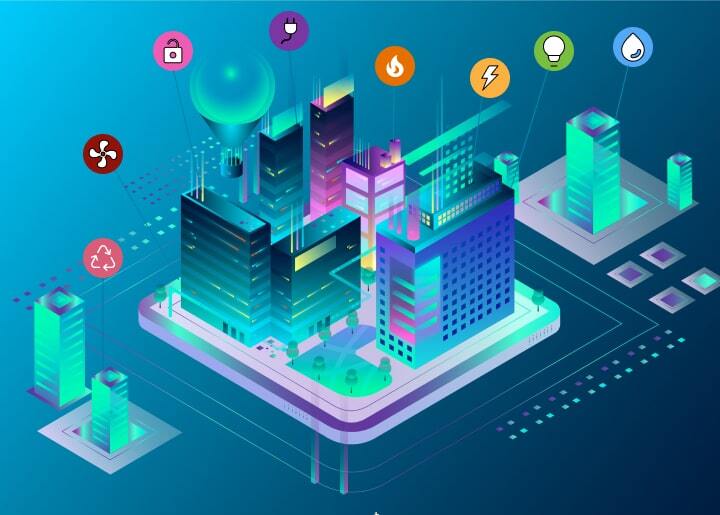In today’s digital age, buildings must do more than just provide a physical space. They need to keep occupants comfortable and safe while optimizing energy usage and reducing environmental impact. This is where smart buildings come in – structures that utilize IoT technology to control and manage various building systems such as HVAC, lighting, and security, among others. By collecting and analyzing data in real time, smart buildings can provide occupants with personalized comfort settings and optimize building upkeep and maintenance.
Table of Contents:
1. Why Choose Smart Building Technology?
2. Use Cases of Smart Building Technology
2.1 Upgrading Your Building with a Smart Solution

Why Choose Smart Building Technology?
There are several reasons why smart building technology is becoming increasingly popular:
- Comfort for occupants: Smart buildings allow for personalized comfort settings, including temperature, humidity, and lighting control.
- Automated control: Building systems are automated based on real-time data analysis, including environmental conditions and occupant behavior.
- Cost optimization: Building usage patterns are analyzed to optimize energy usage, space utilization, and upkeep costs.
- Reduced environmental impact: Smart buildings can reduce emissions by optimizing energy and water consumption patterns.
- Integration capabilities: Smart technology can be embedded into existing structures, eliminating the need for new construction.
- Preventive maintenance: Smart technology can detect potential equipment failures, allowing for preventive maintenance.
- Enhanced health and well-being: Smart buildings can improve indoor air quality, support physical distancing, and optimize building resources.
Use Cases of Smart Building Technology
Smart building technology has a wide range of applications, including:
- Smart offices: Smart offices can improve employee satisfaction and productivity by providing personalized comfort settings and optimizing building resources. The Edge in Amsterdam and Capital Tower in Singapore are two examples of smart offices.
- Smart hospitals: Smart hospitals can enhance staff productivity and cost-effectiveness while improving patient outcomes. The Ankara City Hospital in Turkey and the Sint-Maarten Hospital in Mechelen, Belgium, are two examples of smart hospitals.
- Smart data centers: Smart data centers prioritize uptime, energy efficiency, physical security, and fire safety. The NxtGen Data Center in Bangalore, India, and Interxion Data Center in Vienna, Austria, are two examples of smart data centers.
- Smart life science facilities: Smart technology can help address unique challenges faced by life science facilities, such as biosafety hazards or intellectual property loss. Ferring Pharmaceuticals in Saint-Prex, Switzerland, and Develco Pharma in Schopfheim, Germany, are two examples of smart life science facilities.
Upgrading Your Building with a Smart Solution
Smart building technology offers numerous benefits, making it a popular choice for modern buildings. If you are interested in implementing smart building technology in your company, consider reaching out to companies like Etelligens for assistance.